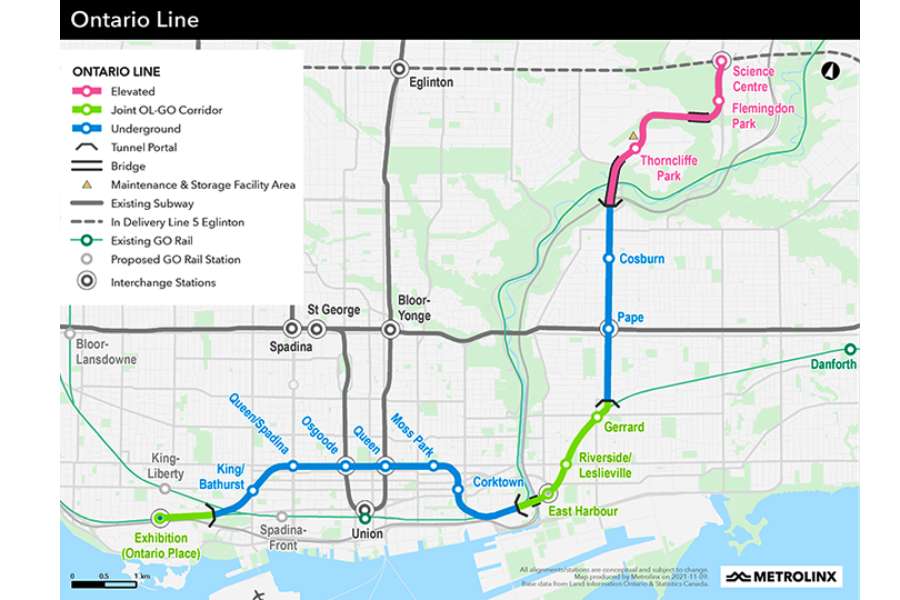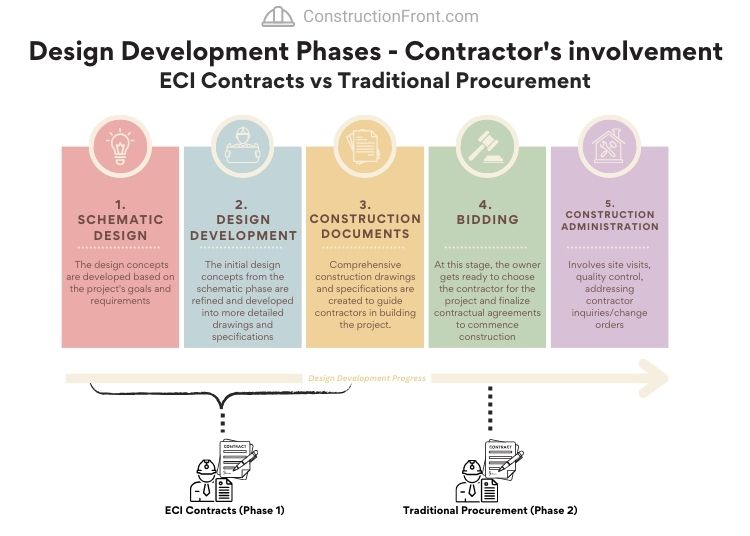A joint venture between Webuild Group and FCC Canada has clinched a contract for the initial phase of the Ontario Line’s development in Canada. The Ontario Line is a significant infrastructure project in Canada, spanning 15.6 kilometres and featuring 15 stations, six intermodal hubs, and over 40 connections with existing transit services.
Under the Progressive Design-Build (PDB) contract, the joint venture will undertake the development and construction of the Pape Tunnel and Underground Stations (PTUS) section of the Ontario Line. The PDB contract involves early contractor involvement, engaging contractors in the schematic design phase to contribute to design, cost estimates, and construction documents.
A joint venture between Webuild Group and FCC Canada has clinched a contract for the initial phase of the Ontario Line’s development in Canada. The Ontario Line is a significant infrastructure project in Canada, spanning 15.6 kilometres and featuring 15 stations, six intermodal hubs, and over 40 connections with existing transit services.
Pape Tunnel and Underground Stations (PTUS) - About the Project
According to Infrastructure Ontario, the Pape Tunnel and Underground Stations (PTUS) project is part of the comprehensive initiatives to realize the Ontario Line—a dedicated 15.6-kilometer rapid transit line connecting the Ontario Science Centre to Exhibition/Ontario Place. The contracted work encompasses:
- Excavation of three kilometers of twin tunnels beneath Pape Avenue, stretching from the Gerrard portal to the Don Valley bridge.
- Underpinning of the existing TTC Pape Station on Line 2.
- Construction of two underground stations, namely Pape and Cosburn, along with two portals.
- Establishment of three emergency exit buildings/emergency services buildings.
- Installation of a rail switch/crossover in the tunnel section near Sammon Avenue.
- Integration with Line 2 TTC subway to facilitate seamless transit connectivity.

When completed, the project will provide:
- Enhanced speed, increased frequency, and reliable access to rapid transit, benefiting over 227,500 individuals residing within a 10-minute walk of an Ontario Line station.
- Improved quality of life for commuters through a reduction in daily travel time.
- Alleviation of crowding on the current Line 1 (Yonge-University) subway.
- Accessibility to up to 57,000 additional jobs via transit within 45 minutes or less for Toronto residents.
Related Project and News – Infrastructure Ontario Projects
- Infrastructure Ontario selects EllisDon to deliver Pediatric Health Complex in Ottawa
- Aecon to deliver the 1.5km Elevated Guideway for the Eglinton Crosstown West Light Rail Extension for MetroLinx (Infrasturcture Ontario)
- AECOM selected as Metrolinx’s Delivery Partner for Eglinton Crosstown West Extension in Toronto
- Infrastructure Ontario closes RFP for Ottawa Hospital PPP – The Civic Campus Redevelopment Project
Pape Tunnel and Underground Stations (PTUS) - Contracting Model
The PTUS contract encompasses the design, construction, supply, and operation of three kilometers of twin tunnels, two underground stations, the interface with the Toronto Transit Commission’s Line 2 subway, and associated works.
The project will be delivered using a Progressive Design-Build (PDB) model. The PDB is an early contractor involvement (ECI) approach to collaborative contracting, typically consisting of two phases.
In contrast to traditional procurement methods, where contractors typically join the process towards the end of the design development phase (during the bidding phase), ECI/PDB agreements bring contractors into the project as early as the schematic design phase (see figure below). This early involvement supports the development of robust design, cost estimates, and construction documents.
Suggested Reading: What is an ECI Contract? (And How It Works)

In this framework, the contractor engages right from the project’s initiation, providing support during the planning and design development (Phase 1 – pre-construction). Subsequently, upon the agreement on commercial matters and project costs, they proceed with the project construction phase through a secondary construction agreement (Phase 2 – construction phase).
The model emphasizes close collaboration between the client, contractor, and designer. This early and integrated approach helps mitigate execution risks during the start-up and construction phases, enhances transparency, and typically leads to fewer disputes between the involved parties.
Pape Tunnel and Underground Stations (PTUS) - WeBuild-FCC JV Details
FCC Canada and WeBuild are partnering in a 50/50 joint venture to execute the project. WeBuild, leading the joint venture, will be responsible for designing and constructing the works commissioned by Infrastructure Ontario and Metrolinx, with FCC’s support.
WeBuild in Canada
WeBuild is concurrently engaged, through the Connect 6ix consortium, in implementing the Ontario Line’s package of works. This includes designing and implementing signalling, communication, and safety systems, supplying rolling stock, and overseeing the line’s operation and maintenance.
The PTUS contract marks WeBuild’s third sustainable mobility project in Canada. In addition to the RSSOM PPP (Rolling-Stock, System, Operation, and Maintenance PPP Contract) and PTUS packages for the Ontario Line, the Group is involved, through the Mobilinx consortium, in constructing an 18-kilometre light rail line along Hurontario Street near Toronto.
FCC Canada
FCC Construcción has been active in Canada for over 25 years. In 1998, it secured the construction, operation, and maintenance project for the Fredericton-Moncton Highway. In 2011, it was awarded a section of the Toronto-York Spadina Subway extension, the city’s first modern underground subway infrastructure project, completed in 2018.
This new contract, coupled with the GO Rail Expansion-On Corridor Project and the Scarborough Subway Extension Stations, Rail, and Systems Project, solidifies FCC Construcción’s position in the Canadian market.













